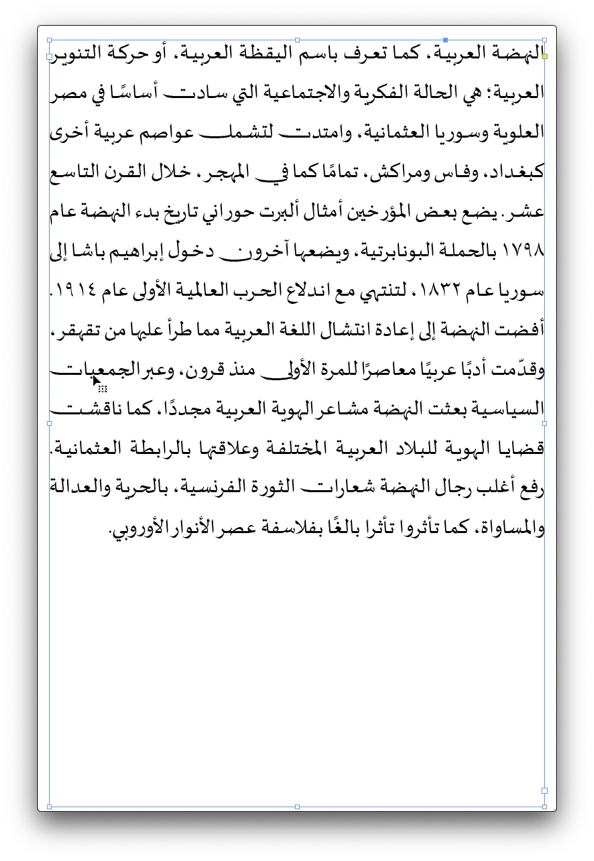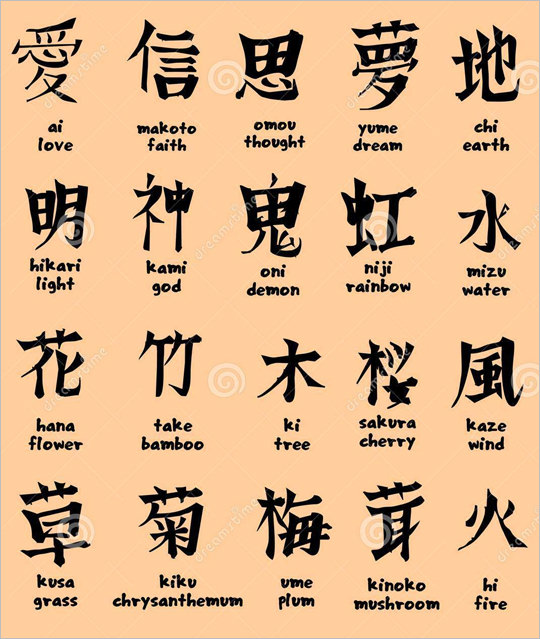Adobe InDesign CS6 Scripting Tutorial Introduction Scripting is the most powerful feature in Adobe® InDesign®. No other feature can save you as much time, trouble, and money as scripting. This document is for every InDesign user. If you never created a script before, we show you how to get started. Adobe InDesign in Urdu, InDesign in Hindi by Universe of SarkarHi Guys my name is Samiullah, i'm going to teach you InDesign creative cloud. Welcome to Adobe.

Opus is working with the Office of Economic Empowerment a department within the State Treasury. The Office runs programs on financial literacy which are available to families throughout Massachusetts. Their collateral needs to be translated into 7 languages. Most are pretty straightforward, we copy and past the translations from MSWord into Indesign and rework the text and layout to fit. Then there’s Arabic. When you paste Arabic text in Indesign, something weird happens.
It flows in reverse. Instead of “1234,” you see “4321.”
And for those of us who do not read or speak Arabic, you wouldn’t even notice. Arabic is read from right to left, so can you just right align the text? Not even close.

So I started to look online for solutions: Indesign Secrets, Adobe Forums, Lynda, a World Tool that cost $99 and a free plug-in that didn’t work. I installed Indesign ME or the Middle East version of Indesign…that was a disaster. In all the search and skimming through forums and blogs, I’m afraid I can’t remember where exactly I found the solution. But I’m so thankful it worked and it’s here now so I’ll never forget.
How to Paste Arabic in your indesign file.
- Create a text box
- Select and Fill with Placeholder text while holding down COMMAND.
- A popup allows you to pick a language. select Arabic
- The box will fill with Arabic lorem ipsum.
Use this box to copy and paste your text from MSword. It’s a little weird selecting text, but you can style as usual.
What’s nice about this is that you can run text in both directions using this method. So if you have English and Arabic in the same document, it’s perfect.
The following Scribe Tool for InDesign enables certain language settings typically available only to users of the Middle Eastern version of InDesign. This tool adds additional support for working with right-to-left languages such as Hebrew and Arabic. This tool should be used in conjunction with the Digital Hub’s Compose Language Styles setting and the Set Up Language Styles InDesign Scribe Tool. Text direction settings do not export and are particular to Adobe InDesign.
Note: Hebrew and Arabic text that appears in the correct order in Microsoft Word may not always appear to be correct in Adobe InDesign. Adjusting paragraph direction in InDesign does not indicate that the text will appear in the correct order in other programs. For titles with extensive use of these languages, word and character order should be checked at each stage of the publishing process.
Text Direction
Forces paragraphs, paragraph styles, and tables to be read from left to right or from right to left based on user selection.
Place cursor in paragraph. Select the Text Direction tool. InDesign will report the following information about the selected paragraph:
- Paragraph Direction: Whether the current paragraph reads from left to right (LTR) or right to left (RTL).
- Paragraph Style: What paragraph style is currently applied.
- Paragraph Direction: What the paragraph direction settings are for the listed paragraph style.
- Character Direction: What the character direction settings are for the listed paragraph style.
- Table Direction: Whether the current table columns are read from LTR or RTL.
Understanding Hebrew and Arabic in InDesign
Hebrew and Arabic both use right-to-left scripts. Programs processing text that combines left-to-right scripts (such as English) and right-to-left scripts (Hebrew/Arabic) must make a decision about what order in which to display the characters. Rather than rely on a user to set all these juncture points between languages manually, most programs offer some automatic method of displaying the multilingual text in a (mostly) correct way. In Adobe InDesign, applying “Adobe World Ready Paragraph Composer” to paragraph styles containing Hebrew and Arabic text is the first step to achieving the correct rendering. Note, however, that when “Adobe World Ready Paragraph Composer” is selected for paragraphs that do not contain any right-to-left text, this setting can result in loose or irregular tracking on the English text.}
When this setting is turned on, InDesign looks at each character and determines whether it is part of a block of left-to-right text (such as a block of English text) or a block of right-to-left text (such as a block of Hebrew text). Characters such as punctuation and whitespace may be read as either left-to-right or right-to-left text depending on the surrounding characters.
While Adobe World Ready Paragraph Composer is a critical setting, it cannot read the content to determine how to treat all elements that appear at the junctures between languages, occasionally resulting in punctuation that may end up on the wrong side of a paragraph or phrase. If a single Hebrew word is included in an English paragraph, text should be typeset with different settings than if a single English word is included in a Hebrew paragraph.
The Middle Eastern version of InDesign gets around this by including paragraph, table, and style settings for applying an explicit text direction to a selection. As with many other settings in Adobe InDesign, these can be applied via a style or directly to select paragraphs, overriding the settings of the applied style.
Paragraph Direction vs. Character Direction

Paragraph direction is used to set the overall context of a paragraph. Updating this setting changes how aspects like punctuation and whitespace are handled, especially at the beginnings or ends of paragraphs. Character direction, on the other hand, will force all characters to be displayed from LTR or RTL. In most cases, this is best left on the default setting, which allows Adobe World Ready Paragraph Composer to handle these characters in a dynamic, semi-intelligent way.
Scribe Tools restores basic access to these settings via the Text Direction tool.
Within the text direction report, changes can be made to text order in the following ways:
- This Paragraph: Paragraph LTR: The default paragraph direction for English and similar languages. Use when the overall context of the paragraph is English.
- This Paragraph: Paragraph RTL: Use when the overall context of the paragraph is Hebrew or Arabic. This setting will fix commonly opening and final punctuation appearing on the wrong side of the paragraph in Hebrew/Arabic-only paragraphs.
These options can be applied to the selected paragraph or to the paragraph style of the selected text. Applying it to a style can be useful when a unique style is used for Hebrew/Arabic-only paragraphs:
- Paragraph Style: Paragraph LTR: Apply “Paragraph LTR” at the style level.
- Paragraph Style: Paragraph RTL: Apply “Paragraph RTL” at the style level.
Other options will reverse the character order of a paragraph style:

- Paragraph Style: Character LTR: Characters will read from left to right.
- Paragraph Style: Character RTL: Characters will read from right to left.
- Paragraph Style: Character Default: Characters will read from left to right or right to left depending on the Unicode character used.
Adobe Indesign Arabic Script Alphabet
The following options are present only when the cursor is located inside a table.
Adobe Indesign Arabic Script Alphabet Font
- This Table: Table LTR: Columns will read from left to right.
- This Table: Table RTL: Columns will read from right to left.
See Scribe Tools for InDesign for information on the use of other tools.